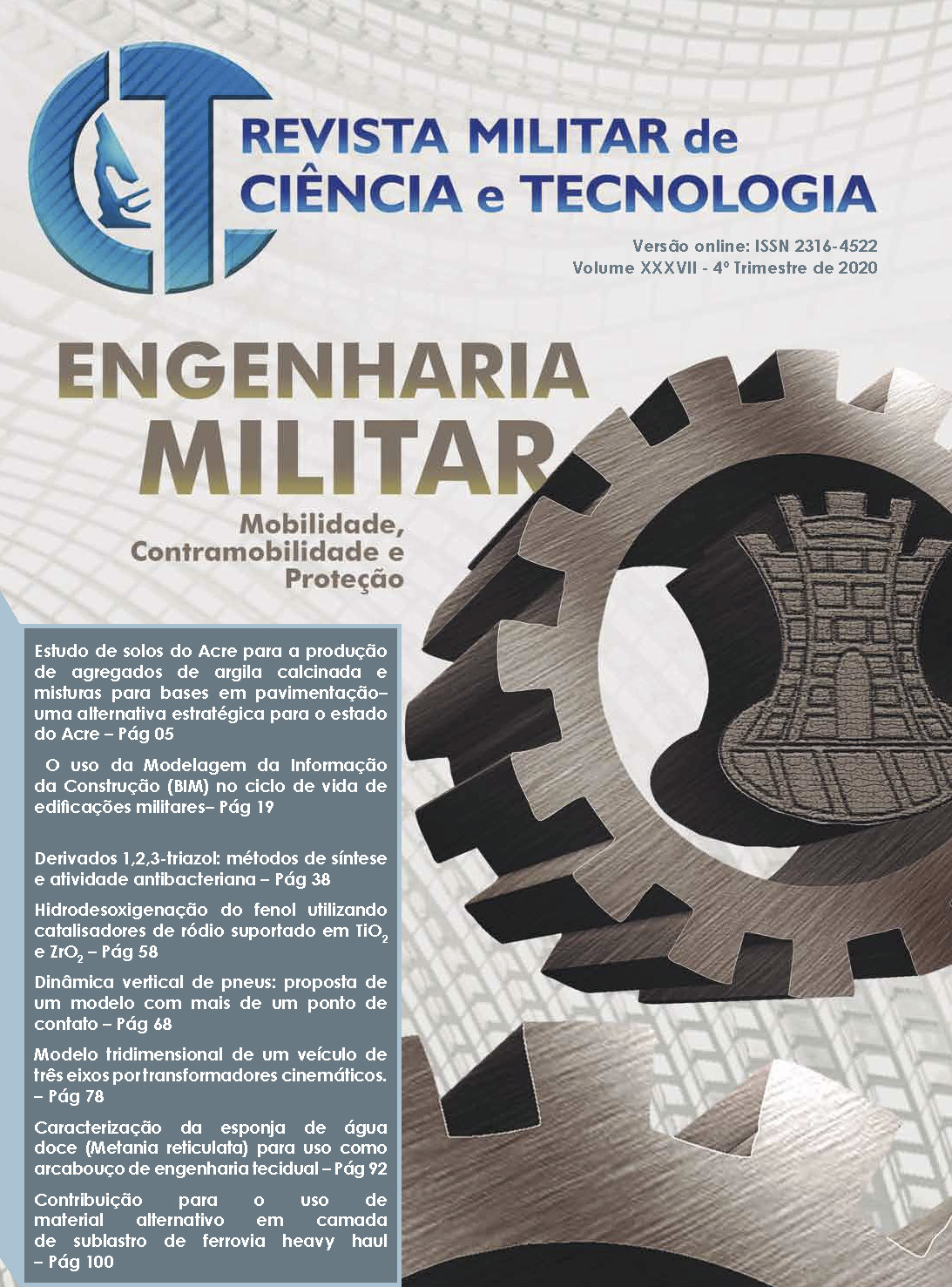Caracterização da esponja de água doce (Metania reticulata) para uso como arcabouço de engenharia tecidual
Main Article Content
Abstract
he demand for new materials that serve as a bioactive medium or porous frameworks for applications in the biomedical field has been increasing due to the general age increase of the population, illnesses caused by accidents or recurrent to trauma, which reduce the quality of life. Freshwater sponges taken from the Rio Negro (Amazonas, Brazil) have siliceous structure, appearing as an alternative source for applications several. Studies have shown that porous structures coated with biological apatite increase the adsorption of proteins and accelerate the adhesion of osteogenic cells. The objective of this work was to evaluate the surface morpholog y and chemical composition by means of X-ray diffraction (SRX) techniques, Fourier transform infrared spectroscopy (FTIR), scanning electron microscopy (SEM) and X-ray spectroscopy by dispersive energ y (EDS), observing the presence of mainly silica structures which, in biological environment, favor osteogenesis and consequently the process of bone regeneration.
Downloads
Article Details
A Revista Militar de Ciência e Tecnologia está licenciada:
A partir de 2022 sob as condições do Creative Commons (CC BY 4.0)
Até 2021 sob as condições do Creative Commons (CC BY-NC-SA 4.0)
Copyright: Os autores são os detentores do Copyright, sem restrições, de seus artigos.
As licenças estão informadas na página de acesso do artigo e são detalhadas a seguir:
Sob a licença CC-BY 4.0, você tem o direito de:
Compartilhar — copiar e redistribuir o material em qualquer suporte ou formato
Adaptar — remixar, transformar, e criar a partir do material para qualquer fim, mesmo que comercial.
De acordo com os termos seguintes:
Atribuição — Você deve dar o crédito apropriado, prover um link para a licença e indicar se mudanças foram feitas. Você deve fazê-lo em qualquer circunstância razoável, mas de nenhuma maneira que sugira que o licenciante apoia você ou o seu uso.
Sob a licença CC-BY-NC 4.0, você tem o direito de:
Compartilhar — copiar e redistribuir o material em qualquer suporte ou formato
Adaptar — remixar, transformar, e criar a partir do material
De acordo com os termos seguintes:
Atribuição — Você deve dar o crédito apropriado, prover um link para a licença e indicar se mudanças foram feitas. Você deve fazê-lo em qualquer circunstância razoável, mas de nenhuma maneira que sugira que o licenciante apoia você ou o seu uso.
Não Comercial — Você não pode usar o material para fins comerciais.
CompartilhaIgual — Se você remixar, transformar, ou criar a partir do material, tem de distribuir as suas contribuições sob a mesma licença que o original.
Sem restrições adicionais — Você não pode aplicar termos jurídicos ou medidas de caráter tecnológico que restrinjam legalmente outros de fazerem algo que a licença permita.
Aviso
Para qualquer reutilização ou distribuição, você deve deixar claro a terceiros os termos da licença a que se encontra submetida esta obra.

